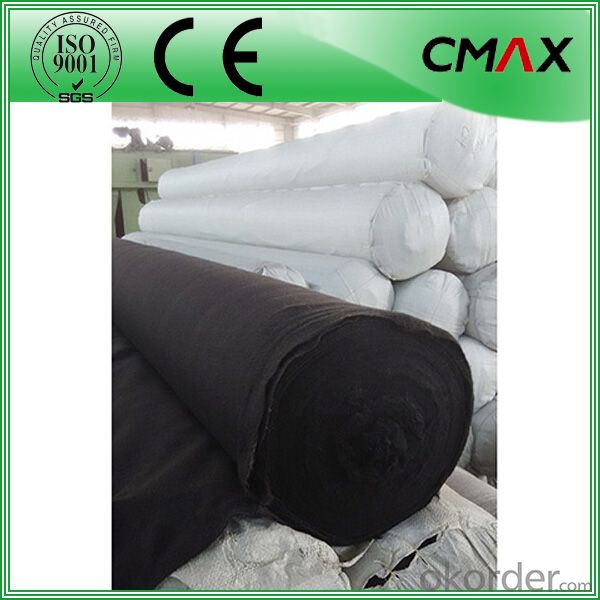- Understanding the Role of Geomembrane Liners in Waste Management
- Innovations in Geomembrane Liners for Water Management
- Geomembrane Liners: A Comprehensive Guide
- The Future of Geomembrane Liners in Civil Engineering
- Geomembrane Liners: Enhancing Landfill Stability
Manager:
WhatsApp:+86 177 0135 2670
Tel:+86 177 0135 2670
Email:marketing@okorder.com
Address:3rd Floor, No.2 Building, No.1 Sanlihe Road
HDPE Geomembranes: The Essential Tool for Environmental Engineers
hdpe Geomembranes: The Essential Tool for Environmental Engineers

Imagine a world where environmental challenges are met with innovative solutions that not only protect our planet but also ensure the longevity of our ecosystems. HDPE geomembranes are the unsung heroes in this quest, and it's time we shed some light on their incredible role in environmental engineering.
The Wonder Material - HDPE Geomembranes
High-Density Polyethylene (HDPE) geomembranes are synthetic materials that have gained significant recognition for their versatility and effectiveness in various environmental applications. Made from polymers, these geomembranes are designed to provide a barrier against pollutants, water, and other contaminants, making them ideal for a range of projects, from landfills to reservoirs.
Versatility at Its Best
What sets HDPE geomembranes apart is their incredible versatility. They can be used in various environmental projects, such as:
- Landfill liners to prevent leakage of hazardous waste into the soil and groundwater.
- Canals and reservoirs to control water seepage and maintain water quality.
- Ponds and lakes to create a waterproof barrier for water storage and recreational purposes.
- Mining operations to contain acidic and metalliferous drainage.
- Wastewater treatment facilities to manage and treat wastewater efficiently.
The Benefits of HDPE Geomembranes
But why are HDPE geomembranes so popular among environmental engineers? Let's dive into some of their benefits:
- Durability: HDPE geomembranes are built to last, with a lifespan that can span decades, reducing the need for frequent replacements and maintenance.
- Chemical Resistance: They can withstand a wide range of chemicals, making them suitable for various industrial applications.
- Low Permeability: Their low permeability ensures that contaminants stay where they belong, protecting the environment from pollution.
- UV Resistance: These geomembranes can endure exposure to sunlight without degrading, a feature that is crucial for outdoor applications.
- Ease of Installation: They are relatively easy to install, with minimal disruption to the surrounding environment.
- Cost-Effectiveness: Over time, the cost savings from reduced maintenance and durability make HDPE geomembranes an economically viable option.
The Installation Process
The installation of HDPE geomembranes is a meticulous process that requires careful planning and execution. Here's a simplified overview of the steps involved:
1. Site Preparation: The area must be cleared, leveled, and free of any debris that could compromise the integrity of the geomembrane.
2. Material Handling: The geomembranes are carefully handled to avoid damage during transportation and placement.
3. Welding: HDPE geomembranes are often joined using thermal welding techniques, ensuring a strong and watertight seal.
4. Inspection and Testing: After installation, the geomembranes are inspected and tested for leaks and structural integrity.
5. Maintenance: Regular maintenance checks are conducted to ensure the geomembranes continue to perform their function effectively.
Innovations and Future Trends
As technology advances, so do the applications and capabilities of HDPE geomembranes. Innovations such as self-healing materials and nanotechnology are being explored to enhance their performance and lifespan. The future of HDPE geomembranes looks bright, with potential for even greater integration into sustainable environmental solutions.
The Human Touch
While HDPE geomembranes are a testament to human ingenuity, they also represent our commitment to preserving the environment for future generations. They are more than just a tool; they are a symbol of our dedication to sustainable engineering practices.
Conclusion
HDPE geomembranes are truly the essential tool for environmental engineers. Their multifaceted benefits and applications make them indispensable in the fight against environmental degradation. As we continue to innovate and push the boundaries of what's possible, HDPE geomembranes will remain at the forefront of environmental protection and sustainability.
So, the next time you see a project that utilizes HDPE geomembranes, remember the incredible impact they have on our planet and the generations to come.
- Previous:HDPE Geomembranes: A Durable Solution for Pond Waterproofing
- Next:HDPE Geomembranes: The Ideal Material for Pond Leak Prevention
-
2024-12-05Geomembrane Liners: A Comprehensive Guide






